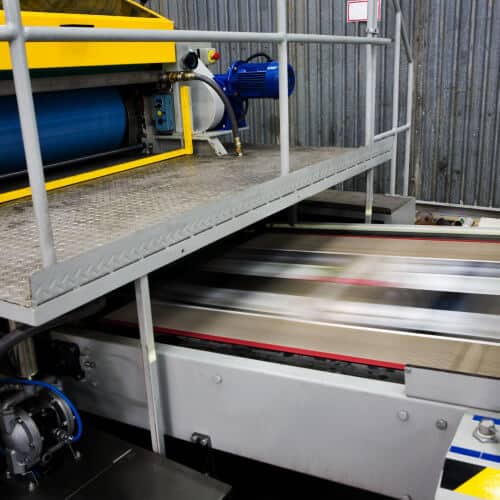The Advantages of Using litho printing for Marketing Materials
The Advantages of Using litho printing for Marketing Materials
Blog Article
A Comprehensive Overview to Understanding Litho Printing Methods
The globe of litho printing, a strategy stemming from the late 18th century, is an interesting mix of background, art, advancement and science. This comprehensive guide will certainly untangle the complexities of this printing technique, from the composition of litho inks to the obstacles encountered in modern-day applications. As we venture into the intricacies of lithography, the value of automation and sustainability in guaranteeing its future relevance comes to be progressively clear. Stick with us as we journey into the captivating world of litho printing.
The Historic Development of Litho Printing
The historical trajectory of litho printing, a pivotal innovation in the world of interaction, is a fascinating story of human ingenuity. The procedure developed with the introduction of the rotary press, which greatly raised efficiency. Each stage of litho printing's advancement showcases humankind's unrelenting pursuit of effectiveness and quality in visual interaction.
Decoding the Science Behind Litho Printing Inks
Progressing in the exploration of litho printing methods, the emphasis now shifts to the scientific research behind litho printing inks. The composition of these inks, their drying out process, and color mixing techniques form the backbone of this complicated art type. Comprehending these aspects is vital to mastering the craft and achieving the desired print outcomes.
Composition of Litho Inks
In lithographic printing, the fundamental role of litho inks can not be overstated. The composition of litho inks differs depending on its objective, yet typically, they contain 2 major parts - pigments and vehicles. Pigments, the color-providing aspects, are carefully ground bits put on hold in the vehicle, a fluid that carries the pigment onto the printing surface area. The vehicle is a complicated blend of oils, resins, and solvents, which affect the ink's drying out time, bond, and gloss. In addition, different additives are existing to improve certain buildings like flow, drying out, and resistance to environmental impacts. Each element plays a crucial component in the final print's quality, making the specific formula of litho inks an intricate science.
Ink Drying Process
From the make-up of litho inks, attention transforms to the fascinating process of ink drying out. 2 key approaches are made use of in litho printing: oxidative drying and absorption. Absorption, on the other hand, involves the ink seeping into the paper fibers, which is a faster procedure however can lead to much less lively colors.
Color Combining Techniques
While the drying procedure plays a key role in litho printing, the science of color blending techniques holds equal significance. The science behind litho printing inks also takes right into account the transparency of the ink, which impacts how shades overlay and mix.
The Art and Layout Aspects in Litho Printing
Litho printing breathes life into art and layout via its one-of-a-kind elements. The procedure includes producing a photo on a lithographic limestone plate or steel plate with a smooth surface. The picture is after that published onto a tool, typically paper, by transferring the ink from home plate. What sets litho printing apart is its ability to reproduce elaborate layouts with high integrity, making the output nearly similar to the original art work. This is attained through the use of various line strategies such as cross-hatching, stippling, and hatching, which permit a variety of tonal impacts. Litho printing accommodates a selection of colors, enabling musicians to produce vibrant and vivid prints. This mix of accuracy and versatility makes litho printing a recommended option for many musicians and developers.
Modern Applications of Litho Printing Techniques
Litho printing techniques have found substantial usage in the modern-day commercial market. Its influence and relevance proceed to expand with the introduction of brand-new advancements and innovations in the area. This section will certainly discover these modern applications and the transformative duty they play in the printing sector.
Industrial Litho Printing Uses
In today's electronic age, one could question the importance of traditional printing methods. Litho printing continues to be an essential part of the business industry. High-volume printing jobs, such click now as the manufacturing of publications, newspapers, Resources and packaging, count on litho printing for its capability to provide premium image top quality and price efficiency. The procedure, which entails transferring an inked image from a plate onto a rubber blanket and after that to the printing surface area, offers unequaled consistency. This makes it perfect for work needing a huge print run. Litho printing additionally provides a broad color spectrum, remarkable to that of electronic printing. This makes it the best selection for jobs that demand vivid, high-grade shade reproduction.
Developments in Litho Printing
Pushing the borders of conventional strategies, modern-day improvements have sustained a host of innovations in litho printing. One popular growth is digital litho printing, which integrates the virtues of digital modern technology with litho's top quality output. These innovations highlight the enduring importance of litho printing in the contemporary globe.
Checking out the Process of Litho Printing: Detailed

Challenges and Solutions in Contemporary Litho Printing

Regardless of the accuracy and custom that litho printing proudly maintains, it is not without its set of modern obstacles. Digital litho printing allows for affordable short runs and simple modification, dealing with the issue of variable data. Therefore, while there are difficulties, the litho printing industry is proactively adjusting to satisfy them head-on, ensuring its significance in the future.
Conclusion
In final thought, litho printing, with its rich history and clinical details, holds a considerable location in the print sector. The future of litho printing hinges on its ability to adjust to these changing demands, verifying its long-lasting worth in an advancing market.

Report this page